A Place of Dreams
The sun is about to set over the inland islands, illuminating the sea and sky in shades of orange as its rays scatter in all directions. The silhouettes of the floating islands appear almost dreamlike in the evening haze. The name of the song that has guided us here, reaches our lips once again.
“’Island of Dreams,’ huh…?”
This song was born right here on the Yumeshima Kaido, composed by Dave Sinclair, who moved here from the UK via Kyoto. What kind of island could inspire a musician who once was the life of the UK’s progressive rock scene to make such a life changing move? From what kind of landscape did this ode to the Seto Inland Sea emerge? Driven by a desire to know, we find ourselves here, exchanging words with others drawn to these very islands. As we reflect on our journey, the song repeats in our heads—Island of Dreams.
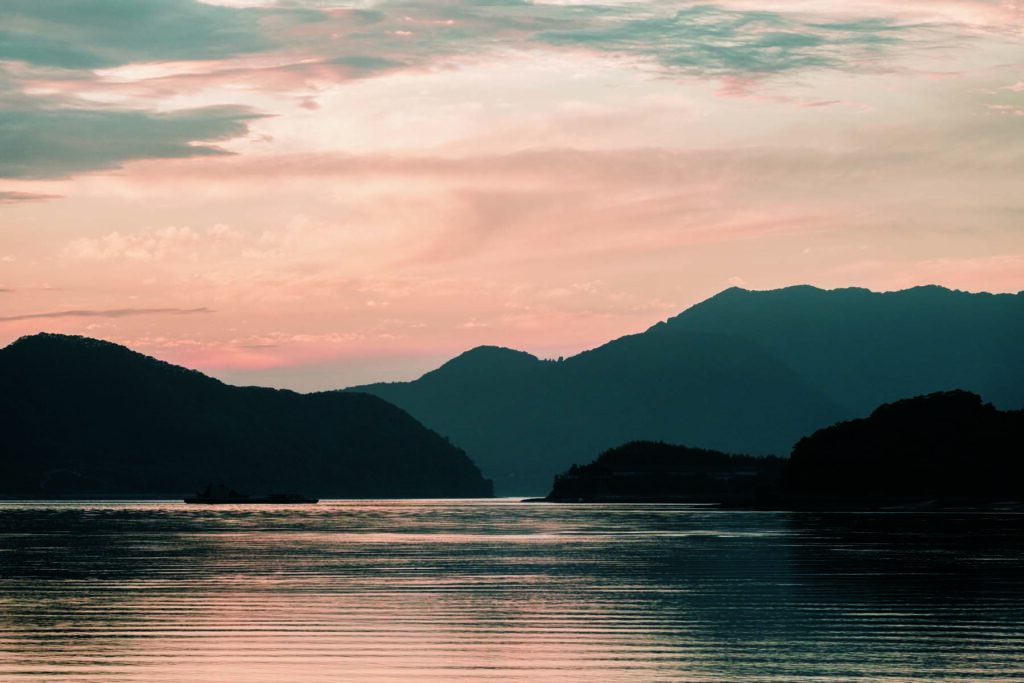
Welcome to the Island of Blue Lemons
As dawn breaks over the glistening Shimanami Kaido, we set out from the shores of Suno’e Port on Ikuchi Island. Nestled within Ehime Prefecture’s Kamijima-cho, the dreamy Yumeshima Kaido strings together the islands of Iwagijima, Ikinajima, Sashima, and Yugejima. This maritime avenue is accessible via six ferry routes from Innoshima and Imabari. A mere five-minute ferry ride connects Suno’e Port to the quaint Okogi Port on Iwagijima, making 33 passages a day. Stepping off the deck of the boat, we notice a welcoming and joyful “Yo kita no (you’ve come a long way)” inscribed below our feet.
Despite being just a five-minute ferry ride, we feel like we’ve journeyed to a distant land. As soon as we set foot in Okogi Port, the first sight to catch our eye is a group of young men racing their bikes to the end of the concrete stretch, leaping onto the embankment and casting their fishing rods out into the water. While fishermen are a common sight in the Seto Inland Sea, there is a unique and lively air about them. We strike up a conversation and learn they’ve come from the Philippines.
“We prefer the island to the city. It’s slower here. Reminds us a bit of home.”
They work in a shipyard, and fishing seems to be their leisure of choice on days off. Flashing bright white smiles, they continue to gaze serenely at the calm waters for what seems like an eternity.
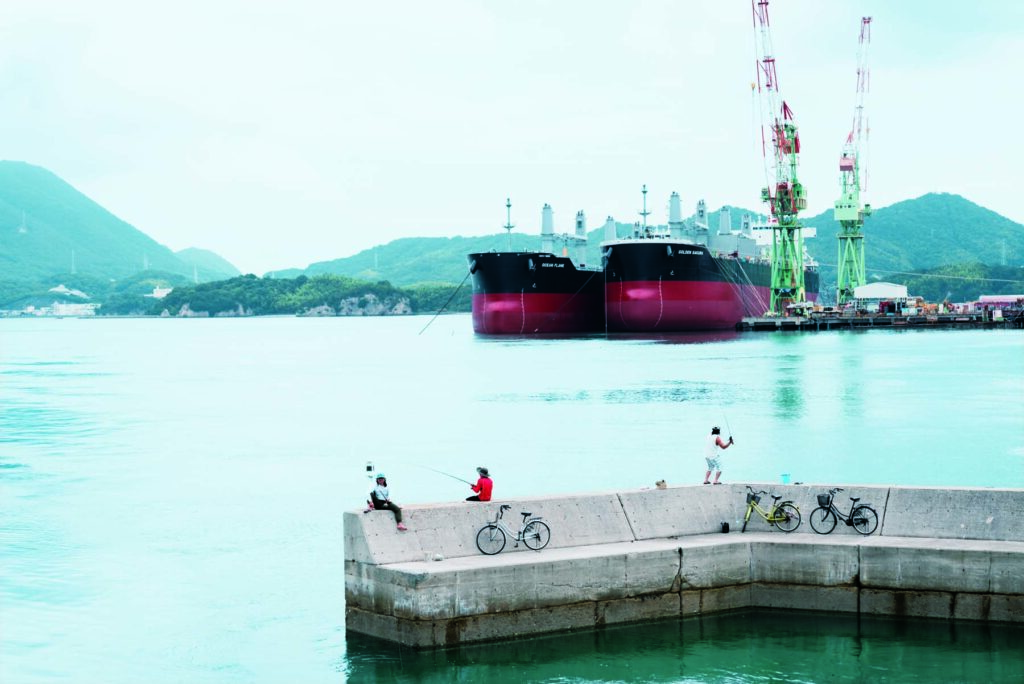
At Okogi Port, a sign reads “We look forward to seeing you again on the island of blue lemons.” While Setoda, across the water on Ikuchi Island, is famed as Japan’s top producer of lemons, the emphasis on ‘blue’ lemons here (in reality, green) speaks to a pride in their freshness.
The color of the lemons has nothing to do with variety, but rather the timing of their harvest. Typically, green lemons are more aromatic, while yellow ones are juicier. The common association of lemons with the color yellow in Japan likely stems from the fact that 90% of lemons in circulation are imported and require time for transportation. Green lemons, reaching consumers before fully ripening to yellow, are a mark of freshness, and boast an undeniably crisp aroma. This freshness negates the need for preservatives or wax, ensuring both quality and safety.
Iwagijima’s signature green lemons are shipped nationwide but are used in a variety of ways here on the island. One notable innovation is ‘Lemon Pork,’ a brand of pork raised on feed made from lemon pulp, a byproduct of juice extraction. The meat is surprisingly tender, while the fat is sweet and doesn’t overpower the palet. The pigs’ manure, a result of the lemon-based diet, is turned into compost, which is then used by the lemon farmers, creating a self-sustaining cycle of resources within the island.
Riding our bikes, we watch as the ‘blue lemon sign’ grows smaller in the side mirror. From Okogi Port in the northern part of Iwagijima, we head towards Iwagi Port in the south. Before setting off, we recall the words of an elderly man we had encountered in Onomichi.
“Going to the Yumeshima Kaido? Then you absolutely must have lunch at Lemon Heart in Iwagi Port. Their lemon pork bowl is truly delicious.”
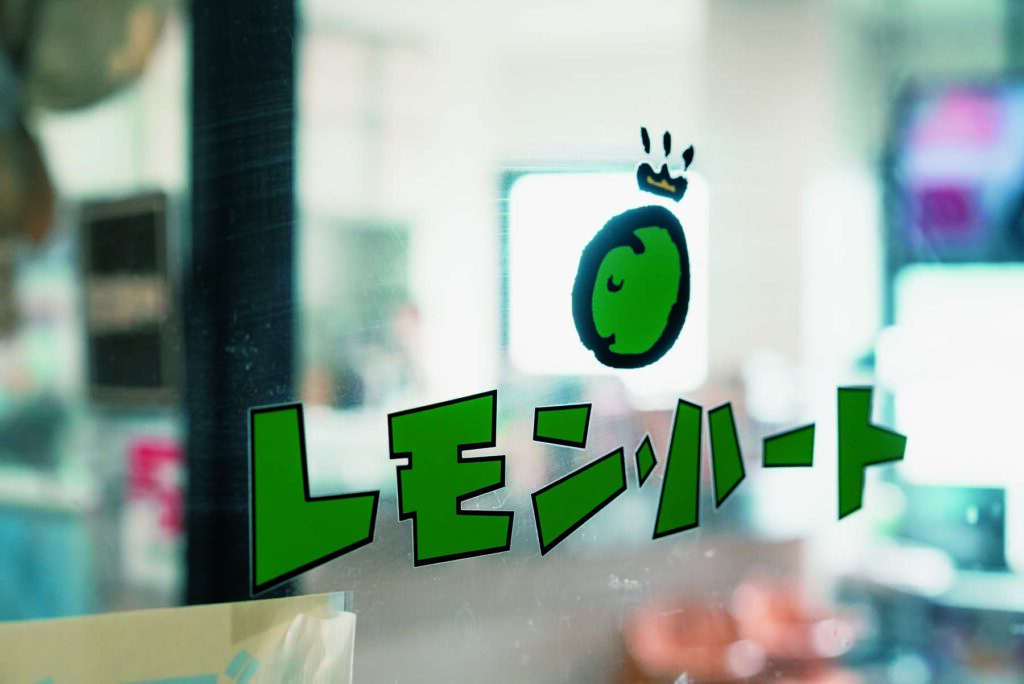
Island Flavors — Not Just Lemons
For a meal at Iwagi Port, locals highly recommend Yoshimasa as well. While the menu features lemon pork bowls, their pride lies in fresh seafood sourced directly from the local fishermen. You can even experience fishing on their recreational boats and have your catch freshly prepared. With at-home style guest accommodations available, it’s a popular spot for tourists staying overnight.
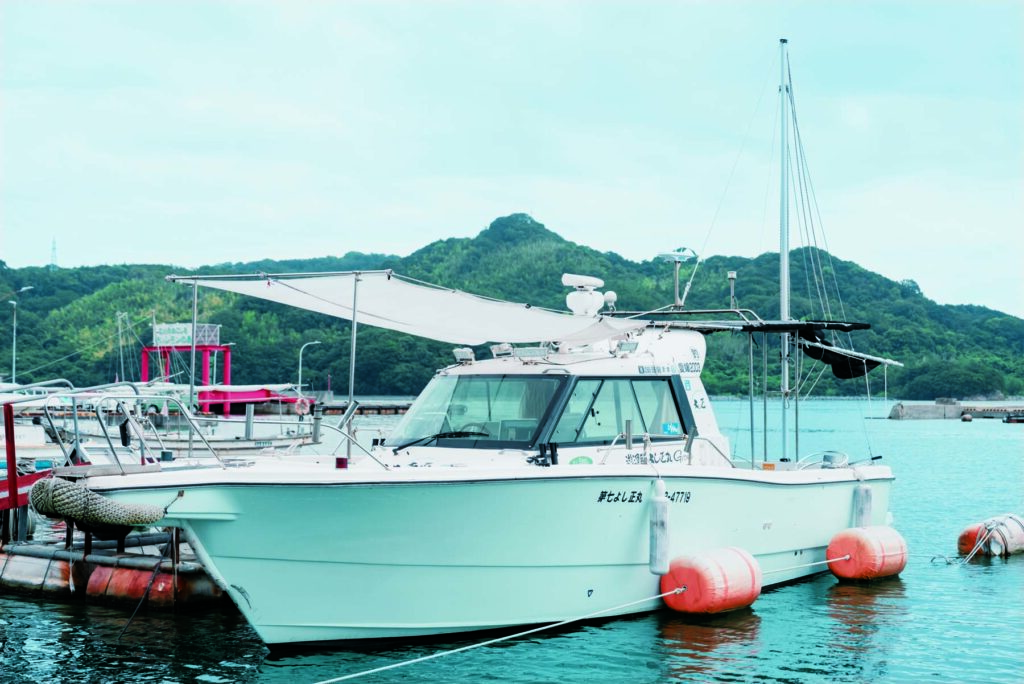
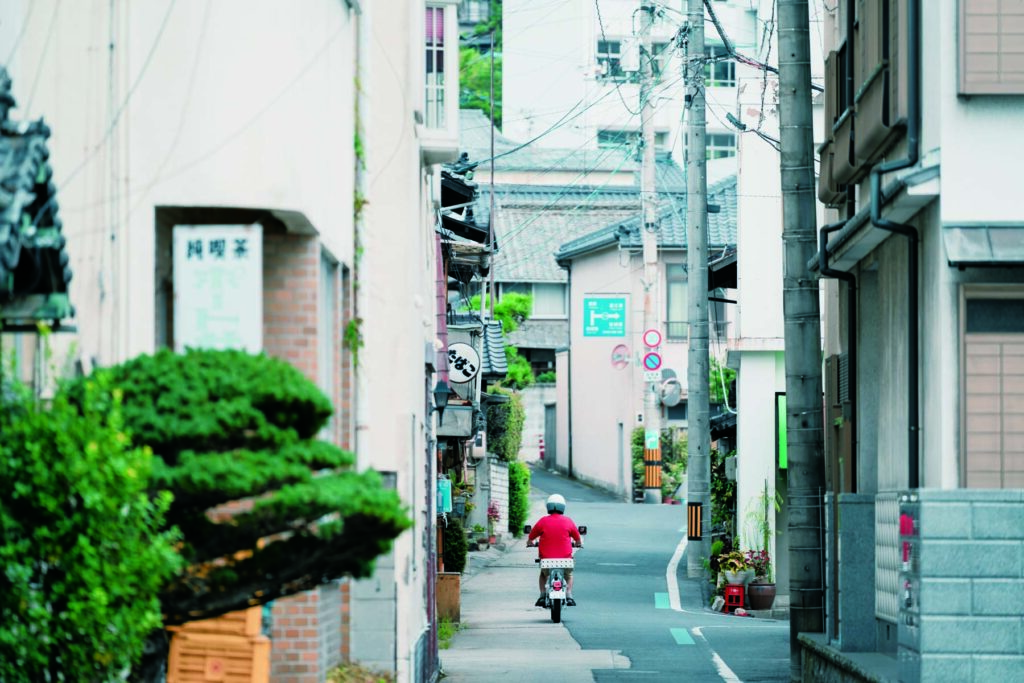
After satisfying our hunger we set off on our bikes and pass by a grand stone monument etched with the name ‘Tanikichi Masuda’. The memorial stone is surprisingly large for an unfamiliar name. Beside his name, it reads ‘The Originator of Potato Sweets’.
Iwagijima, famed as the island of blue lemons since 1985, actually has its roots steeped in sweet potatoes, a legacy dating much further back. The island’s sweet potato cultivation once thrived to the point of overproduction. The turning point came with Tanikichi Masuda in 1912, who pioneered the sweet potato confectionery industry. This innovation sparked a boom, leading to over 30 producers on the island at its height, with daily outputs rumored to reach several tons.
Today, Tamura Foods, located near the stone monument, is the sole producer of sweet potato snacks on the island. Each bite reveals an addictive sweetness unique to the potato, coupled with a texture that’s both moist yet crisp. Finding ourselves unable to stop reaching for more, we delightfully delay our bike journey.
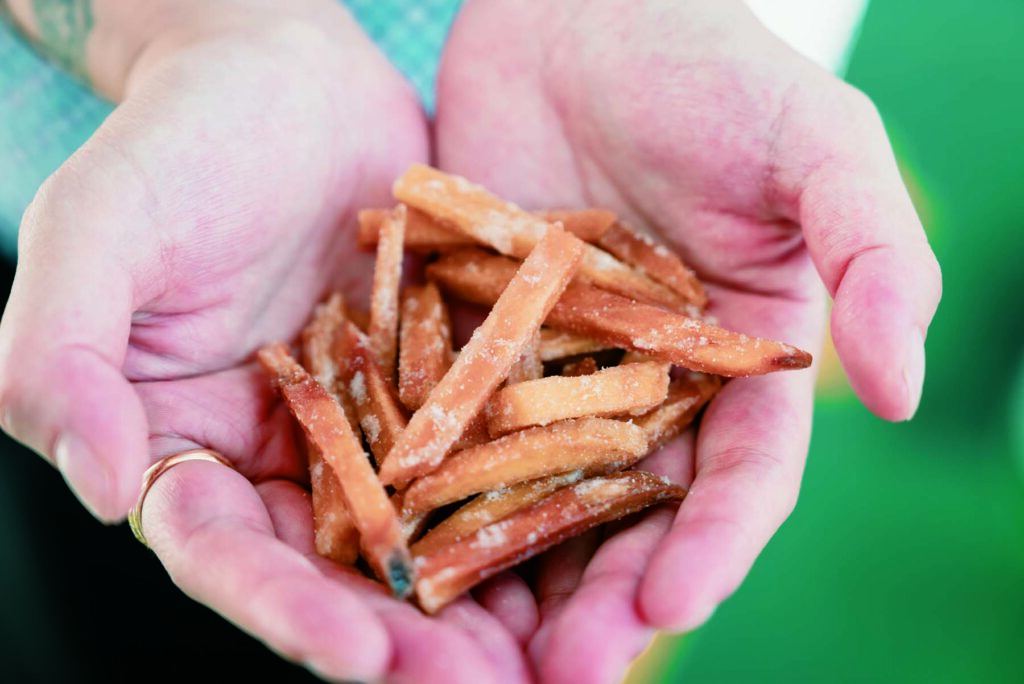
Not On the Island? I’ll Make it Myself.
The Yumeshima Kaido, having just fully opened in 2022, is relatively new in history. Among the bridges built that year is the Iwagi Bridge, connecting Iwagijima and Ikinajima. Spanning 916 meters in length and 137.5 meters in height, it stands as one of the tallest cable-stayed bridges in Japan, a landmark of the sea route.
The Ikina Bridge, spanning between Ikinajima and Sashima, was also only built in 2011. Until quite recently, the islands were separated by the sea — and at the same time, they were connected solely by the sea.
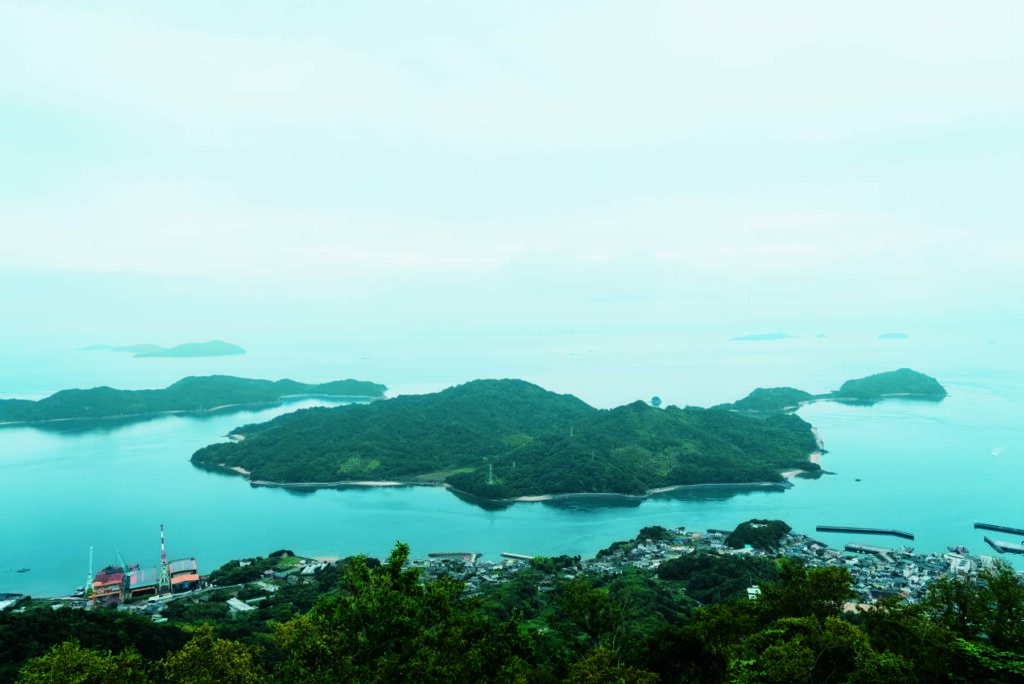
“There are 25 islands in Kamijima-cho. It’s a luxurious thought to build bridges to all of them. Even with only three bridges, I believe we can connect the islands with yachts,” says a confident Sam Saito out on the water. Sam is the owner of Shimatabi Yachts on Sashima. For him, a sailor with a two-year yacht journey with his family under his belt, it came as a culture shock to find that the serene waters of the Seto Inland Sea lacked a proper yacht culture of its own. Seizing this as a business opportunity, Sam now offers cruise experiences on his self-built catamaran, combining beach cleaning and uninhabited island exploration.
Crossing over the Yuge Ōhashi Bridge to Yuge Island, we find a well established, buzzworthy bakery. Kitchen 313 Kamiyuge operates in a charming, renovated building, a registered tangible cultural property over a century old. Owner Maki Miyahatameticulously crafts about ten varieties of handmade bagels and bread, coexisting with the microorganisms that dwell in this historic space bequeathed by her father.
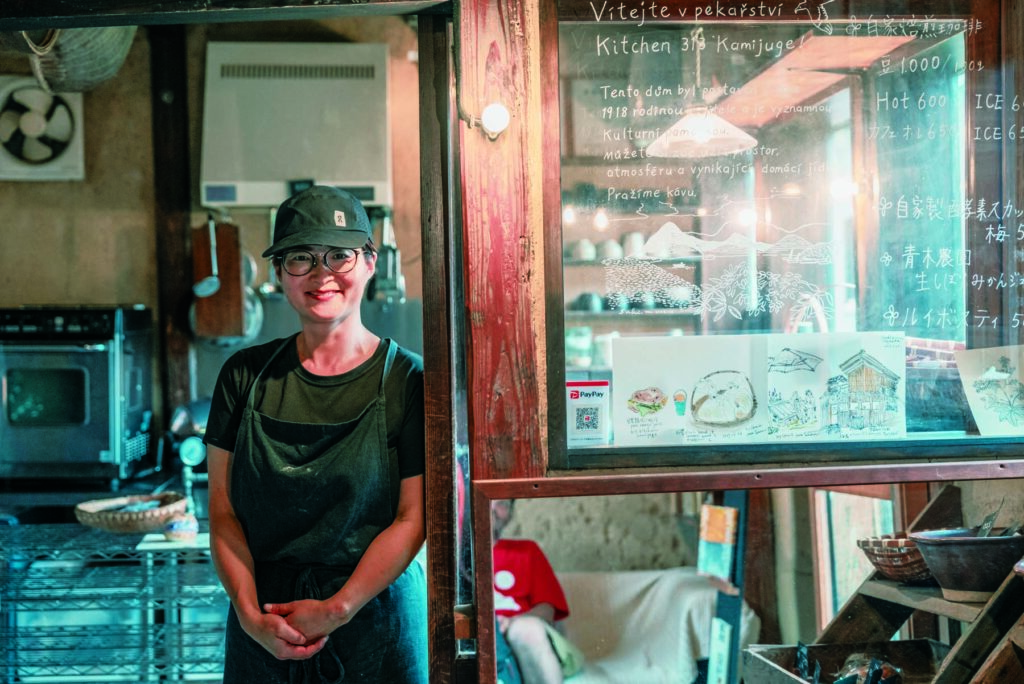
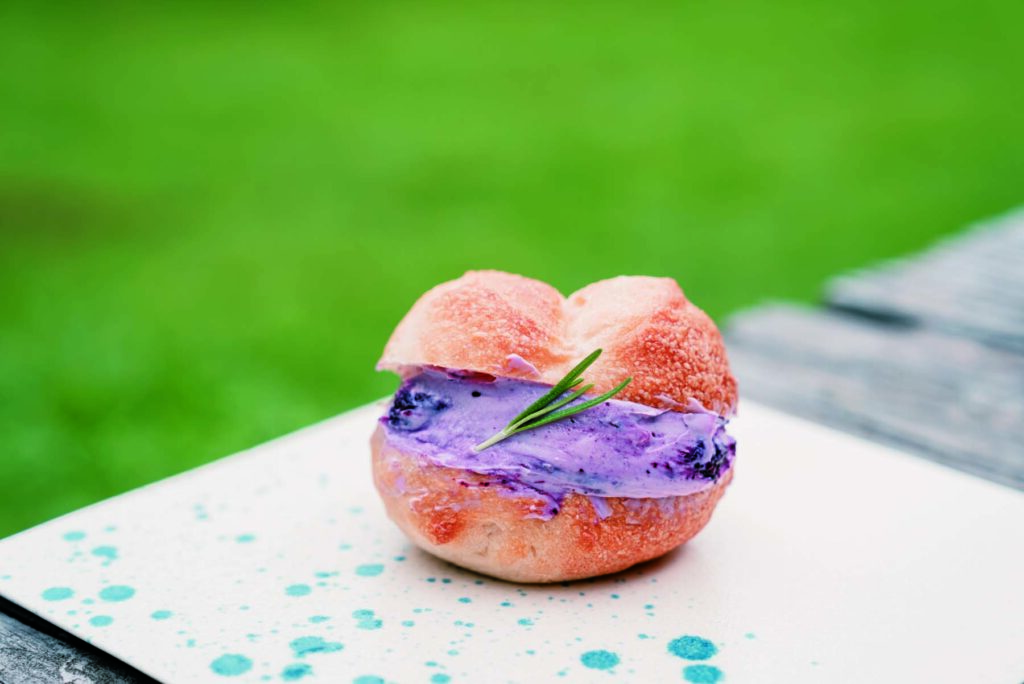
“It was a simple remark by my friend here on Yugejima that started it all,” explained Miyahata-san. “They said, ‘I love bagels, but you can’t find them here on the island.’ This got me thinking — why not bake them myself? The process of kneading bagel dough, it’s quite similar to shaping rice balls, don’t you think? It’s all about living a life rooted in the here and now. I think that as I craft each bagel by hand every day, I’m reminded of why I chose to make my life on this island.”
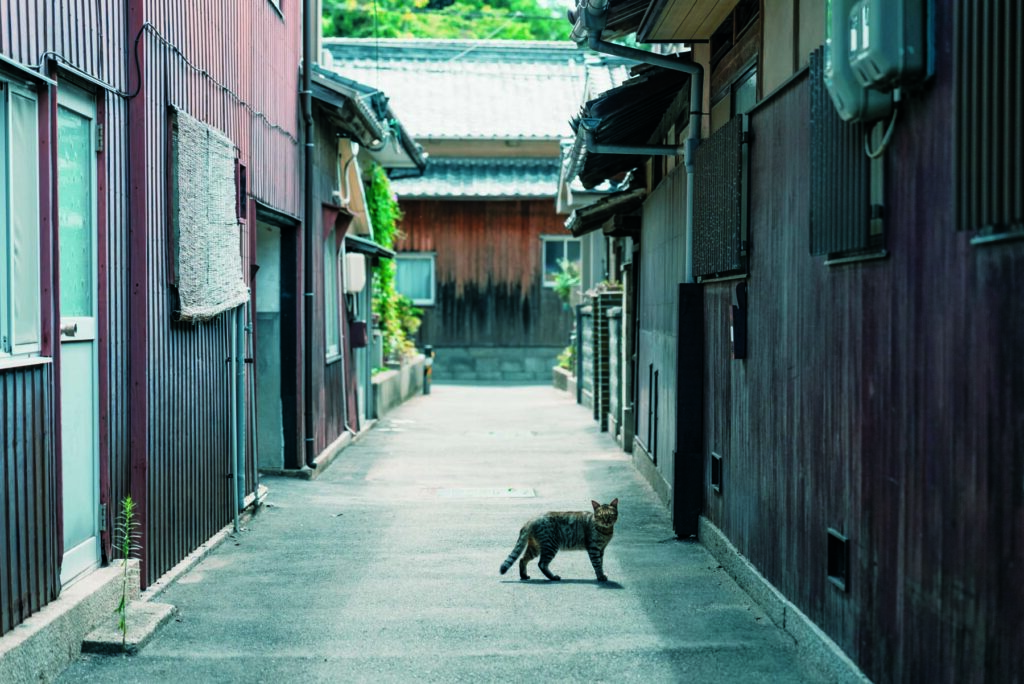
YUMESHIMA Guide
Lemon Heart
1427-2 Iwagi, Kamijima-cho, Ochi, Ehime
TEL:0897-75-3277
Yoshimasa
1540 Iwagi, Kamijima-cho, Ochi, Ehime
TEL:0897-75-2267
Tamura Foods
2160 Iwagi, Kamijima-cho, Ochi, Ehime
TEL:0897-75-2030
Shimatabi Yachts
2804 Yugesashima Kamijima-cho, Ochi, Ehime
TEL:080-9530-2800
Kitchen 313 Kamiyuge
313 Yugekamiyuge, Kamijima-cho, Ochi, Ehime
TEL:090-7371-6888











